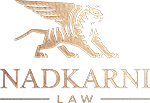When crafting something fresh, like a tutorial or video clip, copyright issues can be an obstacle to progress. Understanding Fair Use in Copyright Law is like having that friend, who knows just what to say to make sure you don’t step on any legal landmines. It’s tricky navigating between original work and borrowed genius—but get this right, and your creativity won’t have to hit pause for pesky permissions.
You’ve probably heard about fair use, but figuring out its ins and outs? We’ll cut through the legalese so you can figure out when fair use has got your back—and when it might be time to reach out directly to the copyright holder instead.
Understanding Copyright Law and Fair Use.
Copyright law wraps a legal framework around the fruits of creativity, giving copyright owners exclusive rights to their works. It’s like an invisible fence keeping others at bay—until fair use enters the scene. Fair use is that clever gate in the fence which, under certain conditions, allows for limited trotting through another’s intellectual property without needing explicit permission.
What is Copyright Law?
The cornerstone of protecting original work lies in understanding what exactly copyright protection entails. By filing with the Copyright Office, creators get a hold on various powers over their creations—from printing copies to performing publicly or creating spin-offs. This control is not indefinite; eventually works waltz into public domain, where anyone can dance with them freely. One such work that recently became part of the public domain – the earliest steamboat version of Mickey Mouse!
The power of copyright ownership on original works spans to numerous types of creative output including books, music scores—even software code has its own choreography protected by copyright laws. But it’s not just about producing entire works; even pulling from copyrighted material for educational purposes needs navigating carefully lest you tread on someone’s toes legally speaking.
The Affirmative Defense of Fair Use.
Fair use swings open that gate mentioned earlier but figuring out if your reason is good enough to pass through—that’s where things get interesting. It acts as an affirmative defense when accusations fly about infringing copyright because sometimes using bits of someone else’s work doesn’t actually break rules—it plays by them differently.
Let me give you some real talk: claiming fair use is not straightforward. There are no guarantees until a court decision gives it a nod—or shakes its head fiercely in disapproval—but knowing how this concept operates could save you headaches down the line.
The Four Factors of Fair Use.
Determining fair use hinges on four statutory factors courts chew over meticulously:
- Purpose and Character of Use: Here we ask—is your usage adding new flavors? Transformative purpose leans favorably towards fair play whereas commercial nature tends to stir up more trouble than it’s worth.
- Nature of the Copyrighted Work: Factual works serve different appetites compared to highly imaginative fare; also whether these treats have been served before affects if you’re getting seconds fairly.
- Amount and Substantiality Used: How much did you help yourself too? And was it more icing than cake? Even small portions can be too rich if they’re seen as essential ingredients.
These elements weave together in a complex tapestry, with some aspects providing stability like anchors, while others may drift off unnoticed. Each component plays its part in the broader picture, contributing to an intricate balance that demands attention and care.
Purpose and Character of Use.
When courts consider whether a use falls under fair use, the transformative purpose is key. A transformative work adds new meaning or message to the original; it’s not just copied verbatim for the same intent as the copyrighted material. Think parodies—they’re often deemed fair because they lampoon an original work.
A commercial nature can tip scales against fair use, but it’s not always a deal-breaker. Non-profit educational purposes tend to favor fair use more strongly than for-profit endeavors, especially if you’re using multiple copies in an academic setting.
Nature of the Copyrighted Work.
Creative works—like novels or songs—are fiercely protected compared to factual works such as biographies or historical texts that may lean towards being free online resources through platforms like Google Scholar. Also, unpublished works are typically accorded more protection since publishing them without the author’s permission could infringe on copyright owners’ control over their first public appearance.
Amount and Substantiality Used.
This factor weighs how much of someone else’s pie you took—and was it their tastiest slice? Using only a small portion might help your case unless that “small” bit happens to be the heart of the work. It’s about measuring fair: too much can sway against you even if your intentions were pure as snow.
Note: The entirety isn’t off-limits per se—it depends on context. For example, copying full articles for non-profit educational discussions may sometimes pass muster when every word is needed for scholarly communication.
Effect on Market Value.
If there’s potential market harm—if what you did could cost someone money—you’ve got another hurdle. If your version steps into sales territory where people would otherwise pay up for content from its rightful owner—or worse yet, if evidence shows bad faith—that does not bode well in court decisions regarding fairness claims.
In assessing market impact though remember: Just because something exists doesn’t mean there’s an established market ready with open wallets; this fourth factor must consider real-world effects rather than hypotheticals.
Fair Use in Various Contexts.
Fair Use in Academia.
The application of fair use in academic contexts is essential, especially when it comes to teaching, scholarship and research. Educational institutions often rely on the four factors of fair use as a litmus test for whether they can use copyrighted materials without permission. For instance, professors might photocopy small portions of a work for classroom discussion or include excerpts in course packs under the guise that these acts serve a non-profit educational purpose.
Yet, this doesn’t mean educators have free rein over all copyrighted content. Courts look at how much material is used and its importance to the entire work. So while distributing multiple copies for nonprofit educational purposes may seem like clear-cut fair use cases—think again! Even here there’s nuance; only specific amounts tailored narrowly toward educational goals typically pass muster.
Journalism and News Reporting.
In journalism and news reporting, where time-sensitive information meets public interest head-on, copyright law bends through fair use considerations allowing reporters some leeway to cite copyrighted works freely if doing so benefits free speech or serves criticism or comment needs. Journalists argue their case based on whether their usage adds new meaning or understanding—a transformative element that courts often favor when weighing up against copyright holder interests.
This freedom isn’t absolute though. News organizations must navigate carefully around exclusive rights owned by creators lest they step into legal quicksand—one wrong move could result in infringement accusations despite any claimed alignment with free speech principles.
Creative Expression and Commentary.
Moving from academia’s structured corridors into the vibrant alleyways of creative expression presents yet another facet of fair use applications. Artists who sample music tracks or parody others’ creations stand behind this doctrine claiming their end products are fundamentally different—and therefore transformative—from original works which help tip scales towards favoring fair user intentions during court decisions about alleged infringements.
A landmark example being Acuff-Rose Music Inc.case, where the Supreme Court judges ruled that 2 Live Crew’s commercial parody song was indeed transformative enough to merit protection under fair use despite its profit-making intent because it offered social commentary distinct from its source material – an important precedent showing just how broad ‘transformative’ interpretations can be.
Seeking Permission vs. Claiming Fair Use.
Grasping when to ask for a green light from copyright holders or when you can fly solo with fair use is key in navigating the complex airspace of copyright law. Let’s not beat around the bush—using copyrighted material without permission can land you in hot water, but there are times when fair use might be your legal parachute.
When to Seek Permission for Copyrighted Material.
Sometimes it’s clear as day: if you’re eyeing that catchy tune for your next ad campaign, or planning to include a best-selling author’s entire chapter in your own book, seeking permission isn’t just polite—it’s essential. In these cases, obtaining permission shields you from potential infringement lawsuits and respects the copyright owner’s control over their creative work.
To seek permission effectively involves identifying who holds the rights—which could be an individual creator or possibly a company—and then reaching out through proper channels. This often means drafting formal letters and potentially negotiating terms including fees. For example, incorporating multiple copies of an article into educational materials typically requires express consent; this aligns with established market interests where copyright protect laws firmly stand ground.
Evaluating Fair Use Without Permission.
Navigating fair use is like walking on tightrope—you need balance and precision because courts weigh four statutory factors to determine whether using copyrighted content tips towards infringement or lands squarely within legal bounds.
The first step examines purpose and character: Is your usage adding new meaning—that is transformative—or merely mimicking the original? Think parody versus copycat scenarios—a factor weighing heavily thanks to the Supreme Court landmark decision in Acuff-Rose Music v Campbell case.
Next up is nature of work—factual works based on reality don’t wear as much armor against copying compared to fictional tales brimming with creativity. Then we measure how much you’ve used—is it just enough seasoning to make your point (fair user), or did you help yourself too generously at the buffet?
Last but never least comes effect on market value: If someone would rather get their fix free online than purchase what they’re after because of what you’ve done… well, that doesn’t favor fair use arguments very much now does it? Each case taps its own rhythm so even though we love patterns no single factor calls all shots here—but let’s remember courts often spotlight first impressions made by purpose/character alongside grand finale impacts via market harm lens.
FAQs in Relation to Understanding Fair Use in Copyright Law.
What is fair use in copyright law?
Fair use lets anyone re-use copyrighted content under certain conditions without the copyright owner’s express permission.
What are the 4 factors of fair use?
Courts weigh purpose, nature, amount used, and effect on market value to decide if it’s fair use.
What is fair use for dummies copyright?
Fair use means you can legally swipe bits of someone else’s work for stuff like teaching or reviewing.
What are 4 examples of fair use?
Samples include quoting books in reviews, parodying songs, educators photocopying texts for class discussion, and reporting current events.
Conclusion.
Understanding Fair Use in Copyright Law is all about balance. Imagine a precarious journey ‘twixt borrowing another’s toil and fabricating something wholly unprecedented. Dive deep into the details, remember those four factors: purpose, nature, amount, and effect on market value. They’re your compass for navigating fair use waters. Kick uncertainty to the curb; fair use isn’t a one-size-fits-all deal but understanding its basics gives you solid ground to stand on.
And if in doubt? Asking never hurts. Sometimes reaching out beats guessing whether you’re covered by fair use. Book a consultation with the Board Certified Intellectual Property Attorney at Nadkarni Law PLLC.





